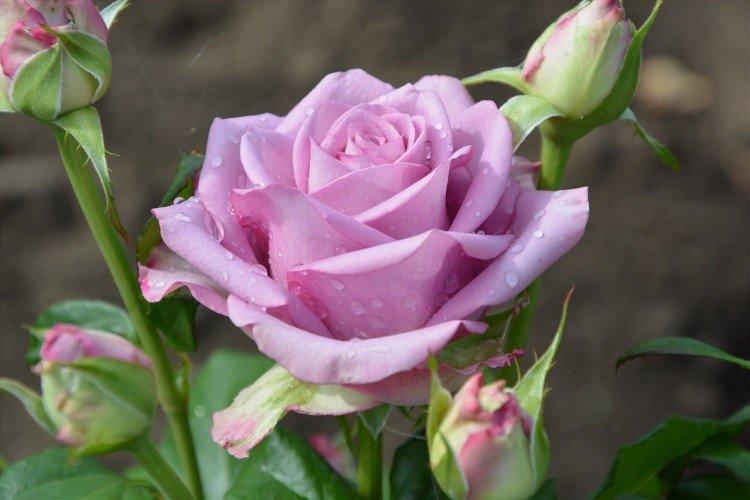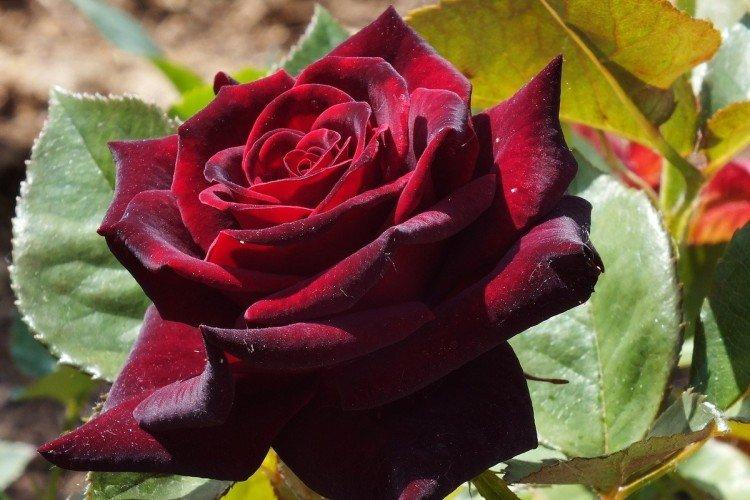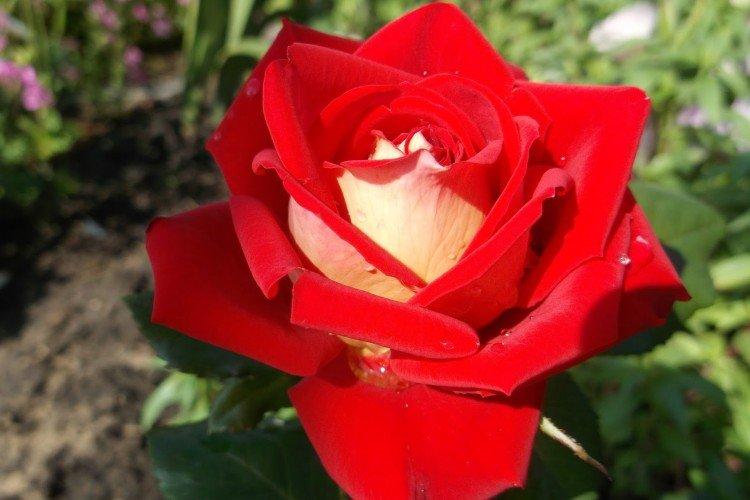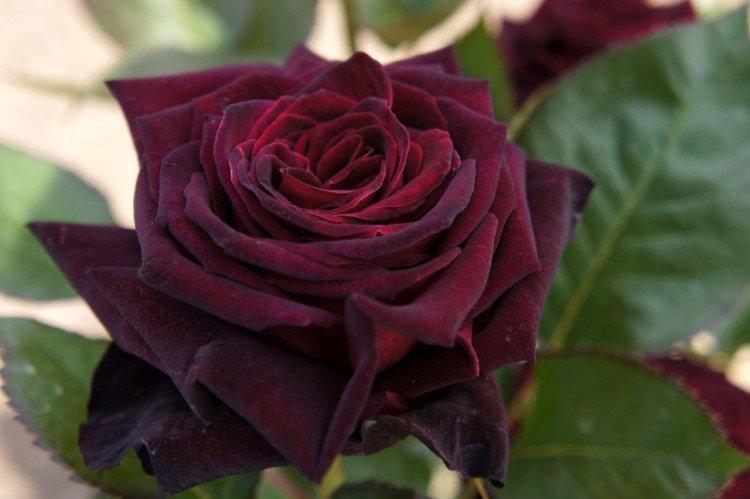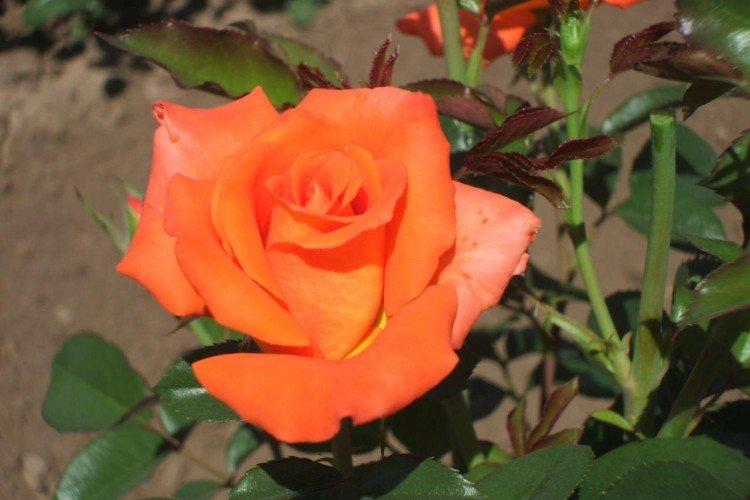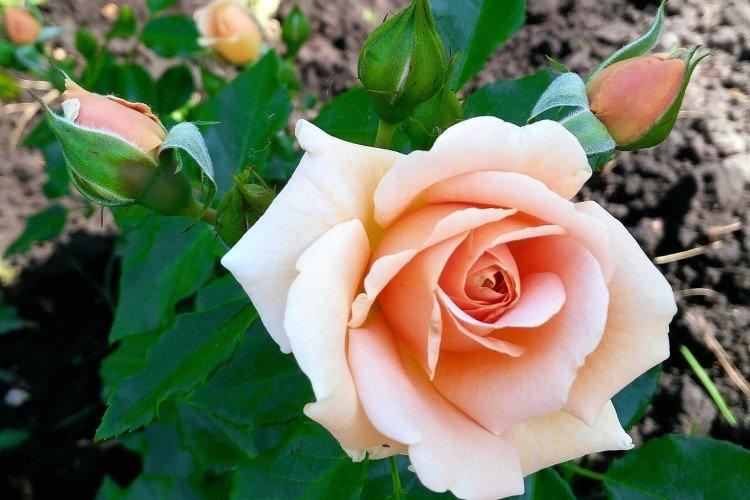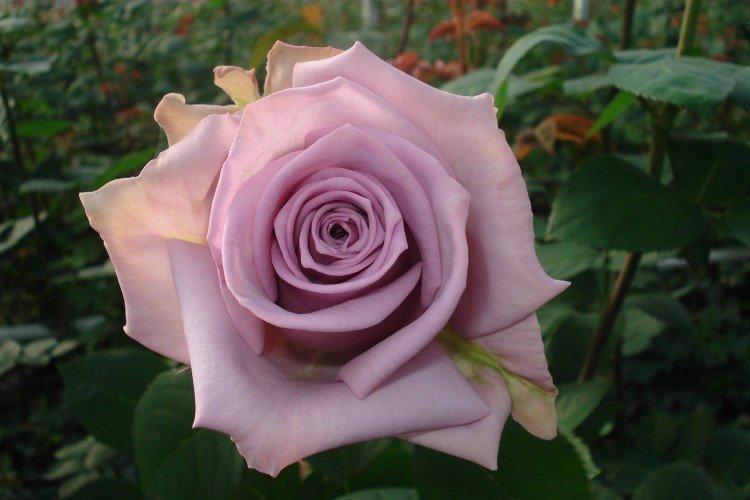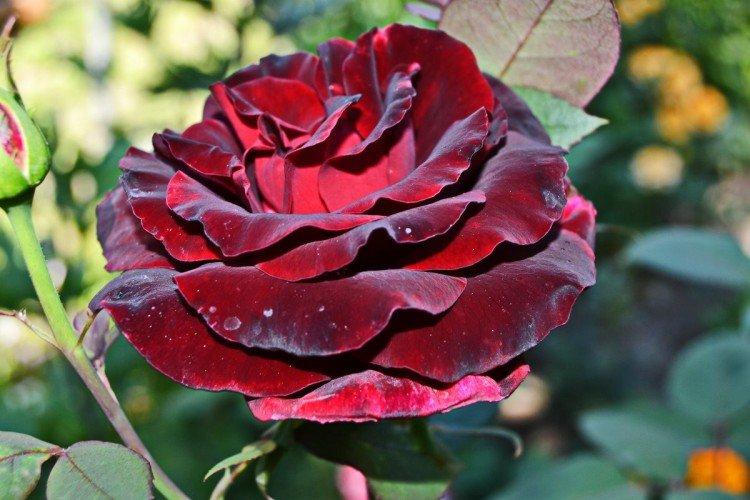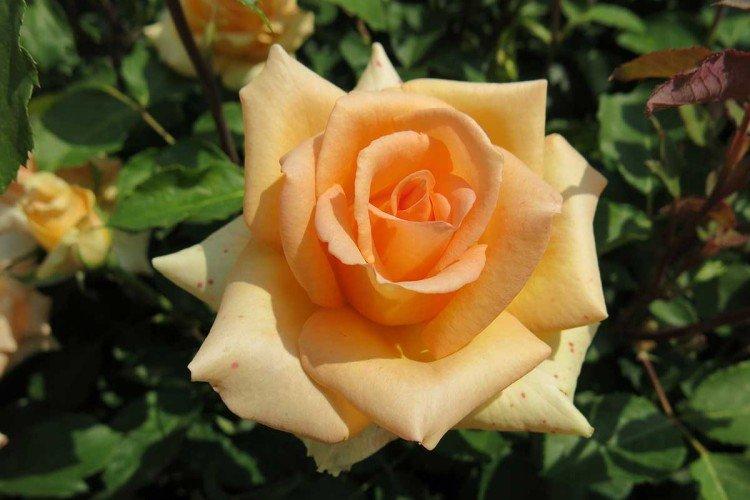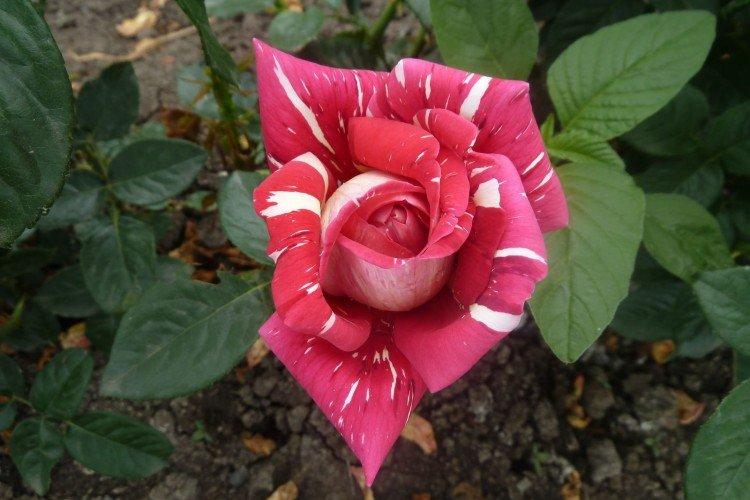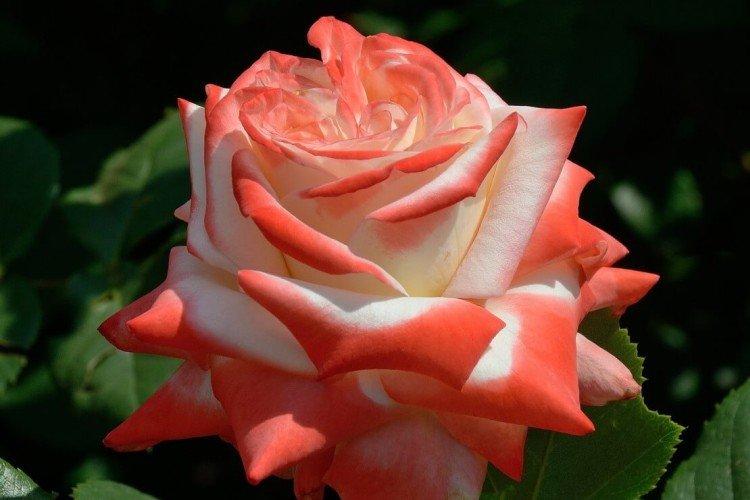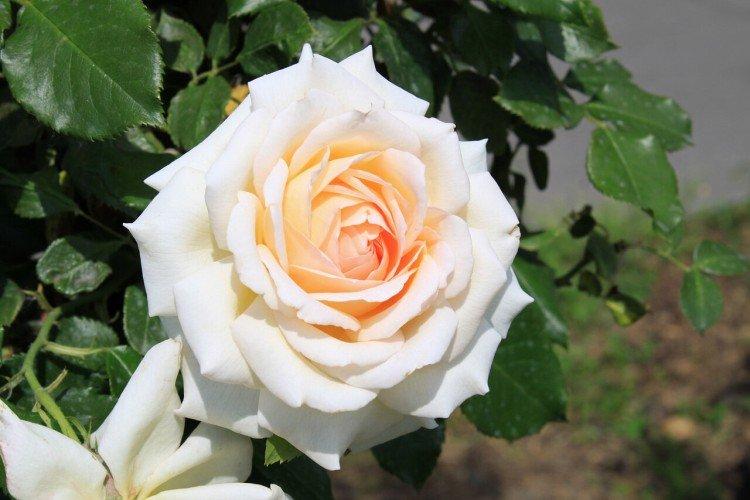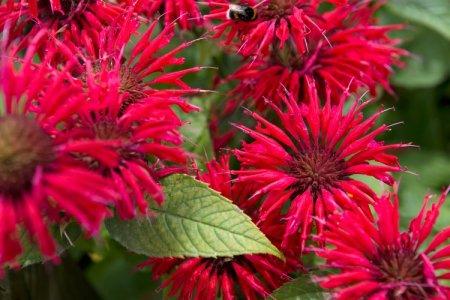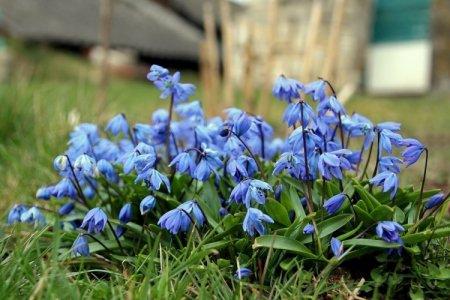
Even seasoned rose lovers sometimes have a hard time understanding dozens of their varieties. So we propose to start your acquaintance gradually - with delicate and beautiful hybrid tea roses, which have already become a real classic!
general information
Hybrid tea roses are the same bushy roses that are most often found in summer cottages. This variety was at one time bred by a French breeder, and for several decades they captured the whole world.
From the tea rose, the hybrid inherited the shape of the buds, expressive aroma and long flowering. From remontant - frost resistance, good immunity and the strength of the bush as a whole.
Now there are, without exaggeration, thousands of varieties of hybrid tea roses for different climatic regions. Therefore, it is almost impossible to deduce a general characteristic for them. The height of the bush ranges from 60 cm to 2 m, and the shape can be almost any. The choice of shades and their mixtures is also limitless.

Types of hybrid tea roses
All hybrid tea roses are bred on the basis of two original species - tea and remontant. Therefore, there is no internal classification as such. You can divide them by height, shade and other characteristics. And we offer some of the most spectacular varieties!
Monica
A very tall bush reaches 1.5-1.6 m in height and is densely covered with orange-red buds. And it is also one of the most frost-resistant varieties.

Black Baccarat
These are the darkest hybrid tea roses of all burgundy, almost black shades. They look very impressive and original, especially in light shade.

Evening Star
Beautiful medium-sized white roses seem much larger than they actually are. And all because of the large petals and the shape of the buds themselves.

Dame de Coeur
Classic red roses on tall shoots with large buds up to 12 cm in diameter. The variety is characterized by frost resistance and excellent immunity.

Osiria
One of the most original two-tone varieties in which burgundy and white shades are intertwined. When cut, Osiria hybrid tea roses look just magical.

Flamingo
A delicate pastel pink shade contrasts with the dark green stems. The branchy shrub is very thorny, but at the same time it blooms very profusely.

Paradise
Paradise hybrid tea roses will definitely appeal to those who appreciate the exotic. In the process of flowering, lavender buds gradually change from red to silver.
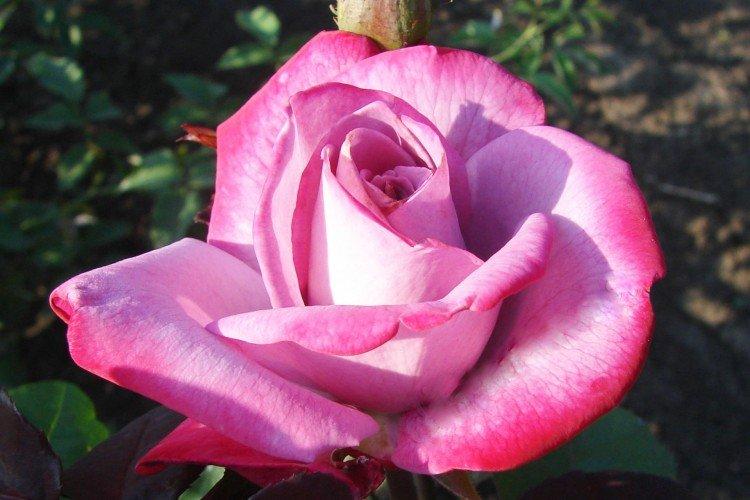
Kerio
Yellow roses attract not only with their bright color, but also with the impressive size of the buds - up to 15 cm in diameter. Large glossy leaves are also quite decorative.

Bogatel gardens
Lovers of cream and peach roses will love this variety. The two-tone petals seem to be painted with a slight gradient.

Blue Moon
The variety is famous for its unusual lilac shade and the same original aroma. Blue Moon buds bloom longer, which makes it seem like the flowering period lasts longer.

Hybrid tea rose care
Despite the inherited immunity, hybrid tea roses are quite capricious and not too hardy. Therefore, it is especially important here to follow all the care recommendations!
Temperature
For the active growth of hybrid tea roses, you need a warm soil, from 12 degrees. Most of the varieties popular in our latitudes tolerate short frosts normally to a slight minus. There are also varieties with increased frost resistance.

Lighting
Roses love sunlight, so they definitely need an open, lit area. Some sensitive varieties require light shading during peak hours. Be sure to avoid drafts in the selected area.

Watering
Do not let the earthy coma dry out, because the roses will begin to shed their leaves and grow worse.When the drought is prolonged, the characteristics of the variety may even change. In particular, the buds become smaller and change shade.
During active growth, bud formation and flowering, hybrid tea roses are watered more often - once a week. And in spring and summer, you can reduce the frequency by 1.5-2 times. After watering, be sure to mulch the soil.

The soil
The soil for hybrid tea roses should be slightly acidic and always very loose. Moisture permeability is the main requirement, and in second place is nutritional value.

Fertilizers and feeding
Hybrid tea roses are fed constantly. At the beginning of growth - twice with nitrogen, during budding - with mineral fertilizers, and with them - at the end of flowering. Roses will like it better if you alternate organic and ready-made mixtures.
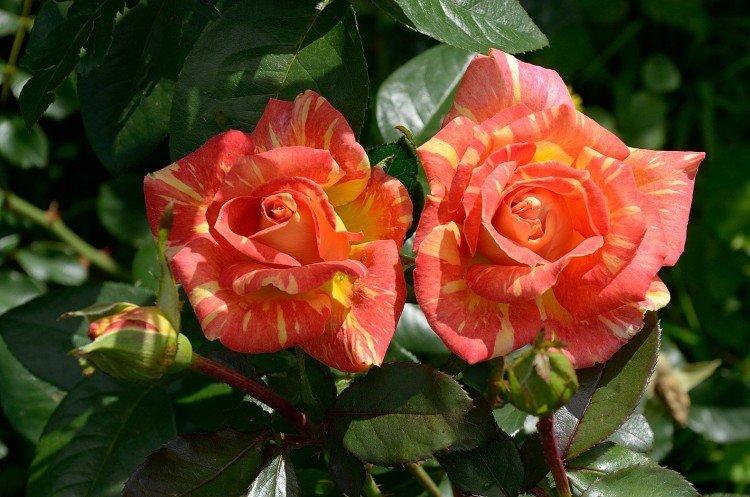
Pruning
In the first year, each branch is cut off on the bush, leaving 2-4 buds for the formation of basal shoots. In the second year, the most powerful and strong shoots are shortened to 20-25 cm, and the rest are the same. Also, be sure to cut out the oldest stems as the entire plant ages.
But further seasonal pruning for different varieties is significantly different. This is due to the fact that in some roses buds are formed only on old shoots, while in others only on young ones.
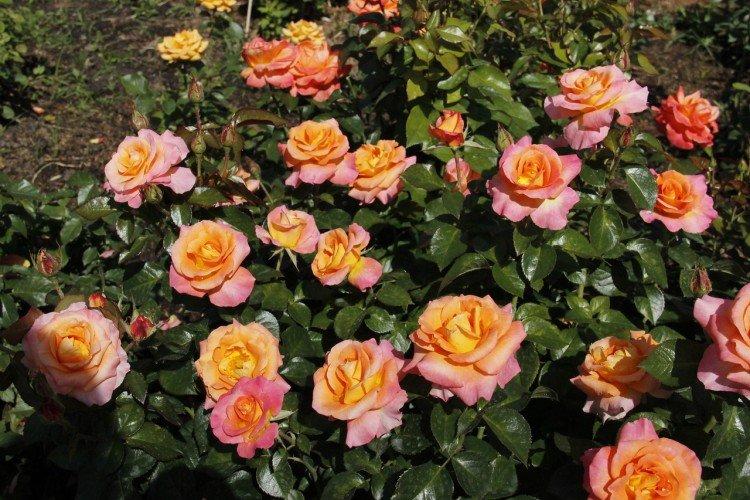
Wintering
At the end of October, you need to cut off all buds, leaves and young shoots. Fill the stems with peat 20-25 cm and cover with a layer of spruce branches. In cold regions, we recommend using a shelter with insulation and a non-woven blanket.

Planting and breeding
Certain varieties of hybrid tea roses are propagated by cuttings, but most often it is more convenient to do this by grafting. In early May, before planting, I leave the seedlings in water for a couple of hours and planted in holes 30-50 cm deep and with the same minimum distance from each other.
After that, the bush is spud at least 15 cm. Otherwise, the features completely depend on your variety, so read its requirements separately.

Pest and disease control
Hybrid tea roses have quite a few fungal diseases. These are powdery mildew, black spot, rust and gray rot. Most often, they first appear on the leaves, so in the early stages it is enough to remove the painful areas and use antiseptics and fungicides.
The main reasons for the development of the fungus are improper care, high humidity due to prolonged rains and excessive thickening of the planting. Therefore, do not forget to regularly inspect your flower garden for suspicious stains and plaque.
A spider mite likes to settle on the underside of the leaves, and rose aphid on young shoots and buds. Rolled leaves and buds are a sure sign of the rose leafworm.
In addition, on the stems there is a rose-colored scale insect and a penny, and bears are hiding in the roots. In all these cases, we advise you not to experiment and use chemicals as soon as possible until the colony has grown even more.
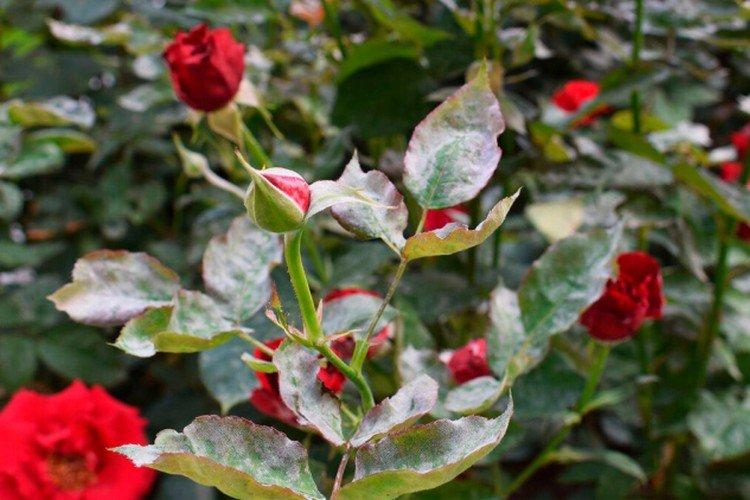
Hybrid tea roses - photo
The beauty and variety of hybrid tea roses is simply impossible to dispute. Among a dozen subspecies and varieties, you can find the flower of your dreams!
